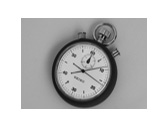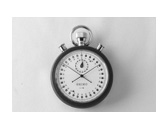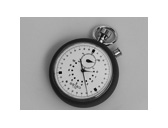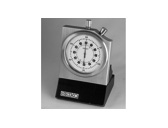Part 1: The Birth of the Stopwatch
This is the first of a three-part feature taking a closer look at the stopwatch and the chronograph.
Part 1 focuses on the historical side of things, from the birth of the stopwatch to the first chronograph.
Stopwatch/Chronograph/Chronometer
We all know the stopwatch as a device used to measure the passage of time, in sports for instance.
Stopwatch functionality wasn’t built in to conventional watches however until a complex watch called the “chronograph” came along. Combining the Greek words “chronos”, meaning “time”, and “graphos”, meaning “to write” or “to record”, the name chronograph literally means “a device to record time”.
A similar word is “chronometer”, which refers to a device used to express time extremely accurately. A prime example is the marine chronometer, an essential item of equipment for accurate and safe navigation at sea. The word chronometer is also used to refer to watches that have been certified to meet Swiss precision standards.
It is worth taking a moment to briefly explain constitutes of a stopwatch.
Although most modern-day stopwatches are quartz digital devices, the first stopwatches were mechanical analog devices with hands to display the time. Both types of devices are nonetheless required to perform the same five functions.
1.They can be started and stopped at any time, and can measure the time elapsed.
2.They can be reset to zero in order to take continuous measurements.
3.They can take continuous measurements in the smallest units required for competitive events.
4.They can take split times, and measure times for multiple competitors.
5.They are highly accurate.
Birth of the Stopwatch
The need to measure the passage of time is nothing new. Records show that time measurement functions were added to watches as far back as the 17th century, and that designs for stopwatches first appeared in the 18th century.
In 1695, a British man called Samuel Watson invented the “Physician’s Pulse Watch”, at the request of surgeon John Floyer. The device was a pocket watch that could be stopped by operating a lever. It was able to measure to an accuracy of 1/5 second.
George Graham, a British inventor who contributed greatly to the advancement of watches through inventions such as the deadbeat escapement, later came up with a start-stop watch that could measure the passage of time to 1/16 second. In 1776, Frenchman Jean-Moyes Pouzai set out a design that added a clock function, to record the passage of time on paper.
None of these experiments however led to the creation of a stopwatch that was functional in a practical sense.
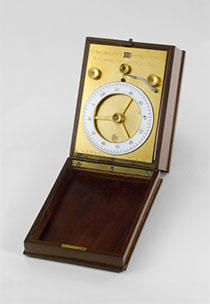
Until just a few years ago, it was widely accepted that world’s first stopwatch was made by Nicolas Mathieu Rieussec in 1822, at the order of King Louis XVIII, following the restoration of royalty in France.
As the king was a keen fan of horseracing, the purpose of this watch was to record the times of individual horses.
Rieussec’s stopwatch was a far cry from the modern-day equivalent. It had a small pen attached to the arm at the top right of the photo. When measuring time, the arm would be brought down over the dial, which would turn when the user started timing. Throughout the time the horse was running, ink would flow from the pen and draw an arc on the watch face. The user could then work out the time based on the length of the arc. It was close to the literal definition of chronograph, meaning “to record time”.
Rieussec’s chronograph was used at the Champ de Mars Racecourse, on the site where the Eiffel Tower is now located. This was the first time that results were recorded based on finishing times, rather than the order in which the horses crossed the line.
Making History
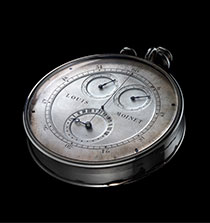
In May 2012 however, a watch put up for sale at auction in Geneva by the world-renowned auction house Christie’s turned this theory on its head.
In 1816, six years before Rieussec, a fellow Frenchman Louis Moinet had made a watch called the “compteur de tierces” (1/60 second counter), which showed the passage of time with hands, much like a modern stop watch.
He had made the watch in order to accurately measure the time it took for stars to cross the lens of a telescope, for the purpose of astronomical research.
Not only was the watch’s mechanism clearly more advanced than that of Rieussec, but it was very much ahead of its time.
Perhaps most surprisingly, it could measure to within 1/60 second. That meant that the escapement was moving at a frequency of 30 Hz or 216,000 vibrations per hour.
Given that modern high-frequency mechanical watches operate at 36,000 vibrations per hour, producing that first watch must have been incredibly difficult. That is what makes it such an extraordinary achievement.
Incidentally, the world had to wait over 100 years for a more precise watch than this, until 1916 when Heuer produced a stopwatch accurate to 1/100 of a second.
The face had sub-dials for seconds, minutes and hours, while the central hand showed the time in 1/60 second. The other advanced feature of Moinet’s stopwatch was its reset mechanism.
The ability to reset the time to zero at the push of a button, a feature that is essential to measuring time continuously, was similarly devised later, by Adolphe Nicole in 1844.
As the watch was designed to measure astronomical events, it also had a long power reserve of 30 hours. Given that the Heuer Monte Carlo, whose 12-hour running time out-stripped conventional products at the time, wasn’t made until 1958, Moinet was even further ahead of his time in this respect.
It was the size of a pocket watch, measuring 57.7mm in diameter. This meant that is was also far more compact that Rieussec’s stopwatch, which was roughly the size of a carriage clock.
Moinet’s chronograph was officially recognized as the world’s first stopwatch by Guinness World Records in 2016.
Subsequent Development of the Stopwatch
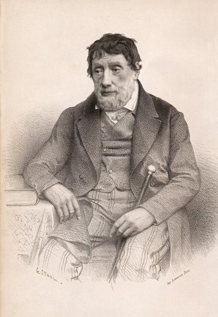
Unfortunately, Louis Moinet’s ground-breaking invention never made it into the public eye. As a result, progress continued gradually, rather than being able to build on his accomplishments.
In 1831, Joseph Thaddeus Winnerl, an Austrian working at Breguet, invented the split second mechanism. This featured two second hands on top of one another. Although both started at the same time, pushing a button stopped just one hand, making it possible to measure the passage of time partway through an event (split time), while continuing to time a second competitor with the other hand.
Although stopwatches were used for purposes such as horseracing and sporting events in the 19th century, their main use was in the military, including measuring landing points for artillery shells.
Advances in technology and industry over time led to stopwatches being used over a wider range of fields, including measuring the speed of cars and airplanes, and gauging production efficiency in factories.
As their scope of application grew, so too did public demand to be able to measure time at will, using a regular wristwatch.
Developing a chronograph so that a stopwatch could be built into a wristwatch however proved to be a difficult challenge. A mechanism needed to be developed so that movement of the watch could be transmitted to the stopwatch only while it was being used to measure time, and then cut off from the stopwatch once timing had finished.
Problems included struggling to effectively transfer movement to the stopwatch, and the sudden increase in workload causing the watch movement to lose accuracy or even stop.
In 1876, a Swiss man called Henry-Alfred Lugrin became the first person to devise and patent a chronograph that overcame this issue. The following year, in 1877, the American Watch Company (Waltham) released a watch based on this chronograph. Longines then released its own model in 1878. With Heuer and other companies following suit after that point, a whole host of chronographs began to come onto the market.
References
・Wikipedia: “Stopwatch”, “John Floyer”, “Samuel Watson”
・New Atlas “The stopwatch: 200 years old and still ticking” by David Szondy
・History of Watch “Chronograph – History of Different Types of Chronographs
・YouTube “Louis Moinet Compteur de Tierces 1816 chronograph”
・Guinness World Records website: First chronograph
Related Exhibits and Items in the Museum’s Collection
